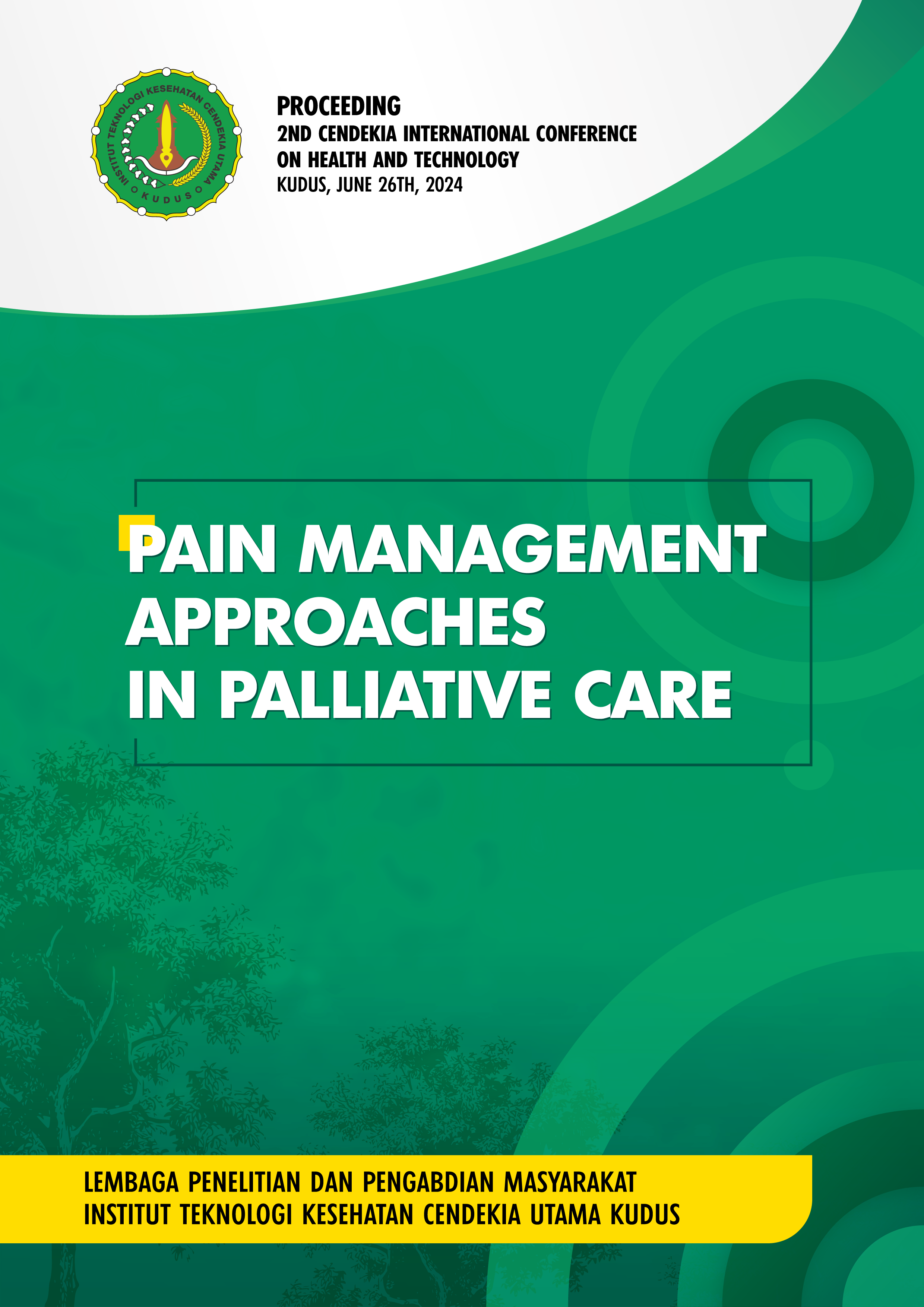Non-Specific Parameters Standardization and Antioxidant Activity of Red Paprika (Capsicum annuum L.) Fruit
Main Article Content
Abstract
Red paprika (Capsicum annuum L.) contains various of carotenoids, β-carotene, polyphenols, and vitamine as an antioxidant. This research aims to determine non-specific parameters standardization of red paprika fruit methanolic extract and antioxidant activity of red paprika fruit ether fraction. Red paprika fruit was extracted by maceration using methanol. The crude extract extract was further fractionated using ether. The red paprika fruit methanol extract was analyzed non-specific parameters such as water content, ash content, acid insoluble ash content and its organoleptic. The red paprika fruit ether fraction was analyzed an antioxidant activity by 2,2–diphenyl–1–picrylhydrazyl (DPPH) free radical scavenging assay. This method was based on measurement of absorbance from DPPH residue using a UV-Vis spectrophotometer at wavelength of 517 nm. The antioxidant activity was expressed as IC50 value. The results of non-specific parameter standardization from red paprika methanolic extract included the water content, an ash content and an acid-insoluble ash content were obtained at 4.32 ± 0.58 % v/w, 26.73 ± 0.10 % w/w, and 11.91 ± 0.37 % w/w, respectively. An organoleptics of the red paprika methanolic extract were found viscous and red-brown color. The antioxidant activity of red paprika fruit ether fraction and β-carotene were 48.50 ± 2.19 and 40.22 ± 2.00 µg/mL, respectively. The antioxidant activity power of the red paprika (Capsicum annuum L.) fruit ether fraction was significantly more potent (IC50 16.53 ± 0.16 μg/mL) than β-carotene (IC50 20.32 ± 0.63 μg/mL).
Downloads
Article Details
References
Abubakar, A. R., & Haque, M. (2017). Preparation of Medicinal Plants: Basic Extraction and Fractionation Procedures for Experimental Purposes. Journal of Pharmacy and Bioallied Sciences, 12(1), 1–10. https://doi.org/10.4103/jpbs.JPBS
Anaya-Esparza, L. M., de la Mora, Z. V., Vázquez-Paulino, O., Ascencio, F., & Villarruel-López, A. (2021). Bell Peppers (Capsicum annum l.) Losses and Wastes: Source for Food and Pharmaceutical Applications. Molecules, 26(17), 5341. https://doi.org/10.3390/molecules26175341
Anonyme, 2009, Farmakope Herbal Indonesia Ith, 165-171, Departemen Kesehatan Republik Indonesia, Jakarta.
Arimboor, R., Natarajan, R. B., Menon, K. R., Chandrasekhar, L. P., & Moorkoth, V. (2015). Red Pepper (Capsicum annuum) Carotenoids as A Source of Natural Food Colors: Analysis and Stability-A Review. Journal of Food Science and Technology, 52(3), 1258–1271. https://doi.org/10.1007/s13197-014-1260-7
Bedlovicová, Z., Strapác, I., Baláž, M., & Salayová, A. (2020). A Brief Overview on Antioxidant Activity Determination of Silver Nanoparticles. Molecules, 25(14), 3191. https://doi.org/ttps://doi.org/10.3390/molecules25143191
Brezeanu, C., Brezeanu, P. M., Stoleru, V., Irimia, L. M., Lipșa, F. D., Teliban, G. C., Ciobanu, M. M., Murariu, F., Puiu, I., Branca, F., & Murariu, O. C. (2022). Nutritional Value of New Sweet Pepper Genotypes Grown in Organic System. Agriculture (Switzerland), 12(11), 1863. https://doi.org/10.3390/agriculture12111863
Gulcin, İ., & Alwasel, S. H. (2023). DPPH Radical Scavenging Assay. Processes, 11(8), 2248. https://doi.org/10.3390/pr11082248
Hassan, N. M., Yusof, N. A., Yahaya, A. F., Rozali, N. N. M., & Othman, R. (2019). Carotenoids of Capsicum Fruits: Pigment Profile and Health-Promoting Functional Attributes. Antioxidants, 8(469), 1–25. https://doi.org/10.3390/antiox8100469
Hidayat, R., & Wulandari, P. (2021). Eureka Herba Indonesia Methods of Extraction : Maceration , Percolation and Decoction. Eureka Herba Indonesia, 2(1), 68–74.
Huang, D., Ou, B. and Prior, R.L., 2005, The Chemistry Behind Antioxidant Capacity Assays, Journal of Agricultural and Food Chemistry, 53, 1841-1856.
Imran, M., Butt, M. S., & Suleria, H. A. R. (2018). Capsicum annuum Bioactive Compounds: Health Promotion Perspectives (J.-M. Merillon & K. G. Ramawat (eds.); Bioactive). Springer International Publishing AG. https://doi.org/10.1007/978-3-319-78030-6
Joseph, N.M., Monika, S., Alok, S., Alok, M. and Shruti, R., 2010, In-Vitro and In-Vivo Models for Antioxidant Activity Evaluation: A Review, International Journal of Pharmaceutical Sciences and Research, 1(1), 1-11.
Kim, J.-S., Lee, W.-M., Rhee, H. C., & Kim, S. (2016). Red Paprika (Capsicum annuum L .) and Its Main Carotenoids, Capsanthin and β-carotene, Prevent Hydrogen Peroxide-Induced Inhibition of Gap-Junction Intercellular Communication. Chemico-Biological Interactions, 254, 146–155. https://doi.org/10.1016/j.cbi.2016.05.004
Kultys, E., & Kurek, M. A. (2022). Green Extraction of Carotenoids from Fruit and Vegetable Byproducts: A Review. Molecules, 27(2), 518. https://doi.org/10.3390/molecules27020518
Li, N., Li, J., Ding, D., Xie, J., Zhang, J., Li, W., Ma, Y., Gao, F., Niu, T., Wang, C., & Bakpa, E. P. (2021). Optimum Parameters for Extracting Three Kinds of Carotenoids from Pepper Leaves by Response Surface Methodology. Separations, 8(9), 134. https://doi.org/10.3390/separations8090134
Mandey, F., Handayani, E., Nanda, W. E., & Noor, A. (2019). Extraction, Fractionation, And Antioxidant Examination Of Polyfloral Honey Originated From Bone Prefecture South Sulawesi Province. Indonesian Journal of Chemical Research, 7(1), 86–91. https://doi.org/10.30598//ijcr.2020.7-fmd
Marinova, G., Batchvarov, V., 2011, Evaluation of The Methods for Determination of The Free Radical Scavengings Activity By DPPH, Bulgarian journal of agricultural science, 17(1), 11-24.
Medina-Juárez, L. Á., Molina-Quijada, D. M. A., Del Toro-Sánchez, C. L., González-Aguilar, G. A., & Gámez-Meza, N. (2012). Antioxidant Activity of Peppers (Capsicum annuum L.) Extracts and Characterization of Their Phenolic Constituents. Interciencia, 37(8), 588–593.
Munteanu, I. G., & Apetrei, C. (2021). Analytical methods used in determining antioxidant activity: A review. International Journal of Molecular Sciences, 22(7), 3380. https://doi.org/10.3390/ijms22073380
Park, S., Jeong, W. Y., Lee, J. H., Kim, Y. H., Jeong, S. W., Kim, G. S., Bae, D. W., Lim, C. S., Jin, J. S., Lee, S. J., & Shin, S. C. (2012). Determination of Polyphenol Levels Variation in Capsicum annuum L. cv. Chelsea (Yellow Bell Pepper) Infected by Anthracnose (Colletotrichum gloeosporioides) using Liquid Chromatography-Tandem Mass Spectrometry. Food Chemistry, 130, 981–985. https://doi.org/10.1016/j.foodchem.2011.08.026
Prasedya, E. S., Martyasari, N. W. R., Hamdin, C. D., Miyake, M., Kobayashi, D., Widyastuti, S., Hazama, A., & Sunarpi, H. (2019). Effectiveness of Methanol Solvent Extraction for Red Macroalgae Acanthophora spicifera Antitumoric Activity. Pharmacognosy Journal, 11(3), 450–454. https://doi.org/10.5530/pj.2019.11.70
Selvakumar, K, Madhan, R., Srinivasan, G. and Baskar, V., 2011, Antioxidant Assays in Pharmacological Research, Review Article, Asian Journal of Pharmacy and Technology, 1(4), 99-103.
Sukandar, D., Nurbayti, S., Rudiana, T., & Husna, T. W. (2017). Isolation and Structure Determination of Antioxidants Active Compounds from Ethyl Acetate Extract of Heartwood Namnam (Cynometra cauliflora L.). Indonesian Journal of Applied Chemistry, 19(1), 11–17. https://doi.org/10.14203/jkti.v19i1.325

